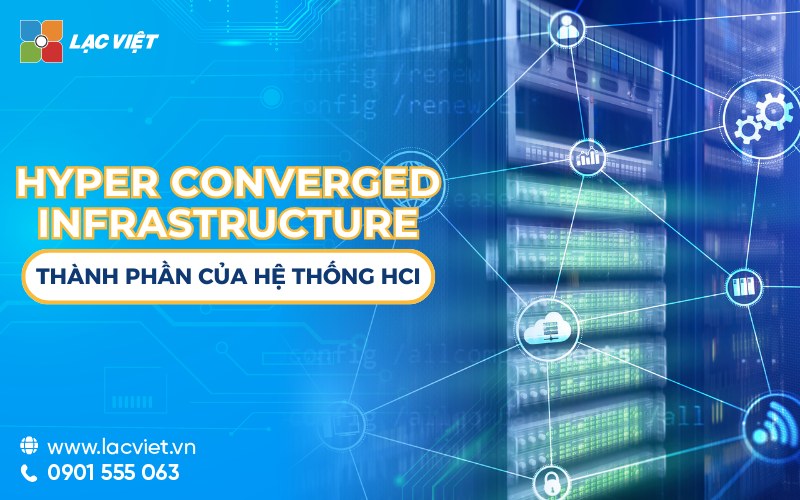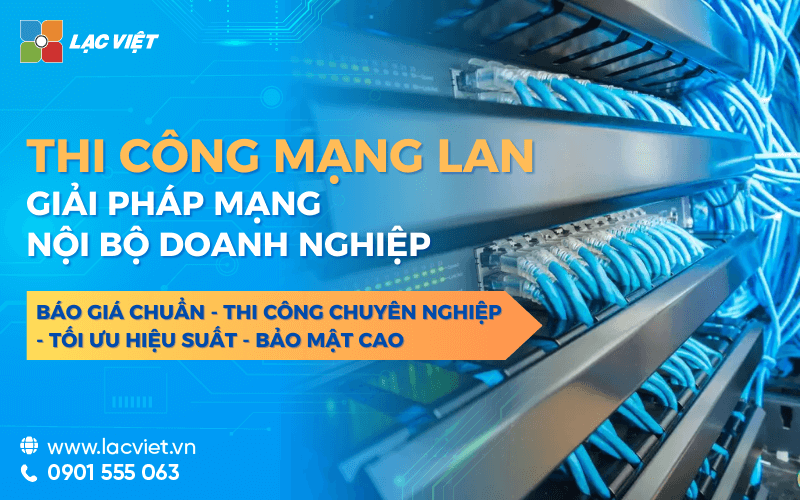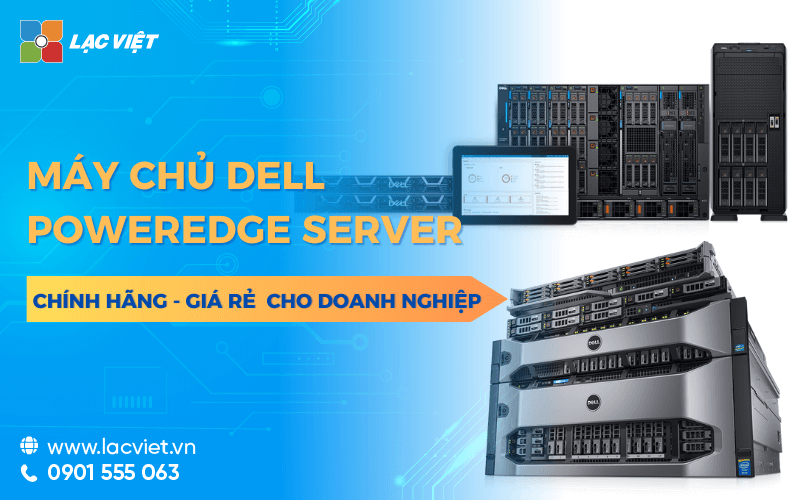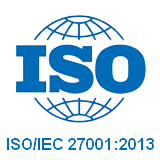When the scale is growing, instead of having to invest in multiple separate systems, such as servers, storage and network...business can leverage the power of the system infrastructure, hyper-converged – Hyper Converged Infrastructure (HCI) to build a technology platform powerful information. Not only the best hardware and software, HCI also bring the ability to virtualize powerful, open, flexible, helping businesses optimize resources, minimize operating costs.
So, what HCI is and what are the important components, how? Process standard implementation turned out to stars? The same Lac Viet Computing find out now through the article below!
1. Hyper Converged Infrastructure (HCI) is what?
Hyper Converged Infrastructure (HCI) or infrastructure hyper-converged là một giải pháp hạ tầng CNTT (IT infrastructure) hiện đại kết hợp cả phần cứng và phần mềm để quản lý tài nguyên mạng, lưu trữ, điện toán trên một nền tảng tích hợp duy nhất.
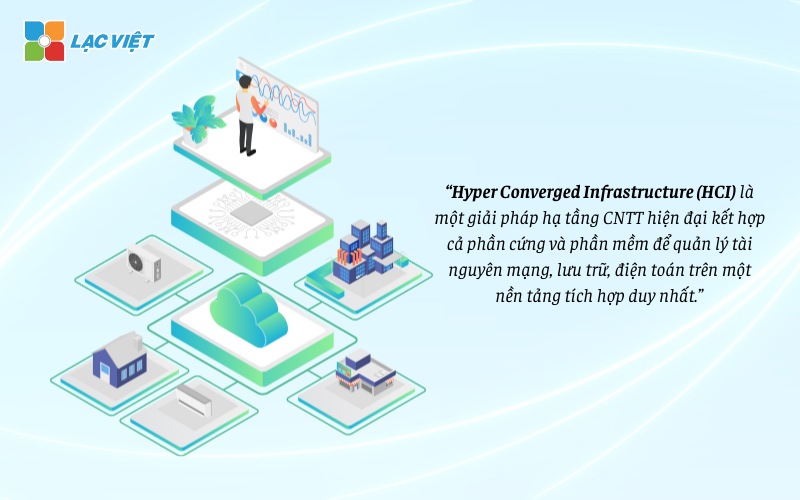
Instead of using the equipment, software, separate, such as in infrastructure, traditional HCI case, the entire resources into a single system, bring more benefits for your business.
Highlights of HCI:
- Integrated comprehensive: The best of three main components including compute (handle), storage (storage) and networking (network) into a single system, which is managed by software.
- Scalable, flexible: Businesses just need to add the new node to expand the resource, no need to re-design the entire infrastructure.
- Automate management: Features such as automatic backup, allocate resources, data recovery, to ensure system operation stability, reduce the burden on the IT team.
System HCI suitable for businesses that need to deploy modern applications, such as artificial intelligence (AI), big data analytics (Big Data), or management system database. This is also the ideal choice to support the cloud services (cloud-native) or the environment, the hybrid cloud.
2. Systems Hyper Converged Infrastructure, including the main components and how?
All infrastructure hyper-converged (Hyper Converged Infrastructure – HCI) and the model of IT infrastructure as traditional infrastructure convergence (Converged Infrastructure – CI) or infrastructure does not converge (Non-Converged Infrastructure) both use the various components to ensure business operations run smoothly. However, while the model infrastructure traditionally used devices separate hardware to perform different tasks, then HCI create the abstract class virtual goods for each of the components in a single device.
Hardware HCI is designed to flexible expansion can scale-up to increase the total resources, infrastructure or scale-out to increase the performance of each component in a single device.
HCI virtualization components, infrastructure, traditional as server (compute), network (networking), storage (storage), and addition of some new components to support the convergence level. The main components of the HCI include:
- Hypervisor: Hypervisor is a layer of software specialized to manage the workload in the system HCI through the creation of virtual machine (VM). This virtual machine acts as the version number of the hardware component independently.
- Nodes: In the environment HCI, node is an independent unit, fully integrated compute resources (compute), storage (storage), network (networking). The node combined with each other to form an IT infrastructure, unified, is virtualization.
- Compute: Ingredients calculate responsible for running the virtual machine and application in the platform HCI.
- Software Defined Networking (SDN): Network component of each node, using technology network defined by software (SDN) to ensure the possibility of communication between the node and supports data flow in the system HCI.
- Software-Defined Storage (SDS): Storage component defined by software (SDS) abstraction and virtualization the system physical storage in the data center, eliminating the need to use the system, specialized storage (storage arrays). SDS allows allocation of resources more efficient storage, regardless of the use of solid-state drives, traditional (SSD) or storage technology, NVMe (Nonvolatile Memory Express).
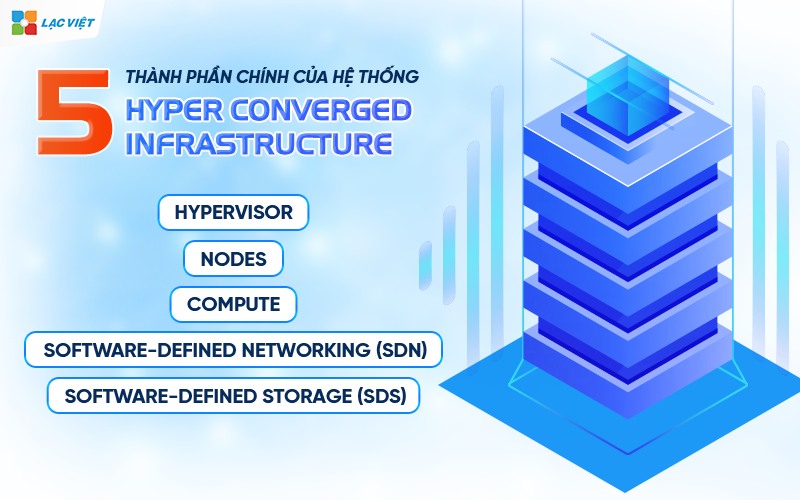
3. The manner of operation of Hyper Converged Infrastructure
Infrastructure hyper-converged combine the whole components in the data center as calculate (CPU), storage (Storage), network and virtual goods into a single system. Instead of using separate devices such as infrastructure, traditional HCI use software to manage and connect all components on an integrated platform. The manner of operation of HCI can be summed up as follows:
Step 1: combine The resources
- HCI use the industry standard (x86) integrated hard drive, HDD or SSD.
- Resources such as CPU, RAM and storage of these servers are consolidated into one cluster (cluster) to use general.
Step 2: software intelligent control
- Software distributed management and coordination of all functions on the server cluster, ensure the compute, storage and network operation, smooth, versatile.
- Data is automatically copied and distributed to increase performance, ability to recover.
Step 3: centralized Management
A management interface only helps to control the entire system, Hyper Converged Infrastructure, replace having to use the management tool separately for each of the components such as servers, storage, or network.
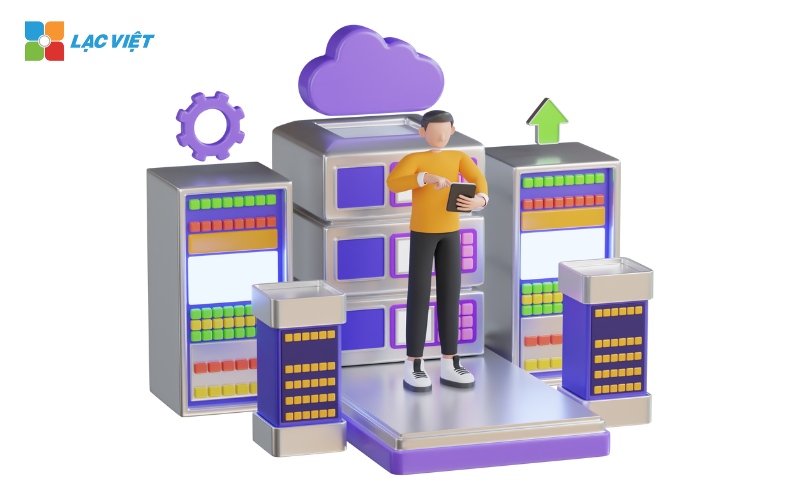
Step 4: scalable, flexible
- When you need more resources, business just adding more servers (nodes) in the cluster HCI which does not affect the current operation.
- Can extend each of the components such as CPU, RAM or storage independently.
Step 5: optimize performance
- HCI typically use a flash drive (SSD) to speed up data retrieval.
- Some configurations also support GPU to increase the ability to handle graphics or volume of work in particular.
4. Difference of infrastructure HCI with other infrastructure
Infrastructure hyper-converged (HCI) is the solution more and more businesses choose to optimize the management and operation of the data center. However, to understand more about the benefits of Hyper Converged Infrastructure, we need to compare it with the model infrastructure such other infrastructure convergence (CI) and cloud infrastructure.
4.1 Infrastructure hyper-converged (HCI) other nothing compared to infrastructure convergence (CI)?
Infrastructure convergence (CI) infrastructure and hyper-converged (HCI) are oriented to simplify the optimization, management, data center, but there are points of difference in the architecture and deployment:
| Criteria | Infrastructure Hyper-converged (HCI) | Infrastructure convergence (CI) |
| Basic architecture | Fully integrated compute, storage and network into a synchronization solution from a single supplier. | Integrated components compute, storage, network from multiple vendors into a packaging system available. |
| Implementing | The components are built, deployed in the form of clusters (node) can be easily extended. | Each hardware components (servers, storage, network) to remain independent and need to integrate craft. |
| Management | Unified management, automation through a virtualization platform and software coordination center. | Manage each component through a centralized tool, but still requires individually configured for each hardware. |
| Scalability | Flexible expansion by adding modules (node), new, simple, do not interrupt system operations. | Expand by adding each component hardware (servers, storage) individually. |
| Performance optimization | Automatic optimization thanks to virtualization and comprehensive software super monitoring. | Basic optimization between the components, but needs tweaking – manual configuration to achieve the highest performance. |
| Flexibility | High, allowing for easy move and re-allocation of resources between the node. | Restrictions in movement, re-allocation of resources between the components. |
| Application technology | Suitable for private cloud, hybrid cloud and the environment need flexibility, high automation. | Suitable for deploying data center traditional with the needs fixed. |
| Investment costs | The initial investment is lower thanks to the built-in ability to gradually expand according to demand. | Initial investment due to the purchase and integration of the separate components. |
4.2 Infrastructure hyper-converged (HCI) other nothing compared to Cloud infrastructure?
Infrastructure, Hyper Converged Infrastructure (HCI) and cloud technologies (Cloud) there are many similarities in the use of virtualization with the ability to manage resources through software. However, between them there are important differences to note:
| Criteria | HCI (Infrastructure Hyper-converged) | Cloud (clouds) |
| Basic architecture | Solutions hardware integration, combining compute, storage and network in a cluster. Activities in the data center with limited resource. | Pattern software services provider, resource virtualization, flexibility to expand or reduce demand. |
| Scalability | Extended by adding modules hardware new, limited by the capabilities of the hardware and data center. | Flexible expansion almost limitless thanks to infrastructure, virtualization, and can be deployed across multiple data centers. |
| Service provider | Provide resources, basic infrastructure such as virtual machines, storage, network. | Offers many services expanded as the load balancer, database, monitoring, developer tools. |
| Deployment and use | Used for the deployment of private cloud, or integrated into the hybrid cloud to support conversion of in business. | Deployed on many types of infrastructure, including Hyper Converged Infrastructure, act as a service software independently to provide resources and flexible service. |
| The relationship of hardware and software | Is the hardware solution focused, be managed through software and fixed in the data center. | Is the software stack that can run on many types of infrastructure, including HCI. |
In summary, HCI role as infrastructure and platform hardware, while Cloud is a layer of software services deployed on infrastructure is to provide resource flexibility to the business.
5. Why business should deploy Hyper Converged Infrastructure?
In the context of digital transformation, and the need to expand IT infrastructure is increasingly high, the system HCI is becoming the ideal solution for business thanks to the ability to integrate flexibility, management simplicity, optimum cost, ensures high performance. Here are the specific reasons that businesses should consider implementing HCI:
5.1 Integrated, flexible and simple management
One of the biggest benefits of HCI is the ability to integrate and manage the components of IT infrastructure in a single system.
- The best resources: HCI integrated handle (compute), storage (storage), network (networking) on the same platform, eliminating the complexity when operating multiple systems individually.
- Business process automation: Thanks to the management tools, focus, businesses can reduce 30% of the time for administration of IT infrastructure, help focus resources on activities other strategies.
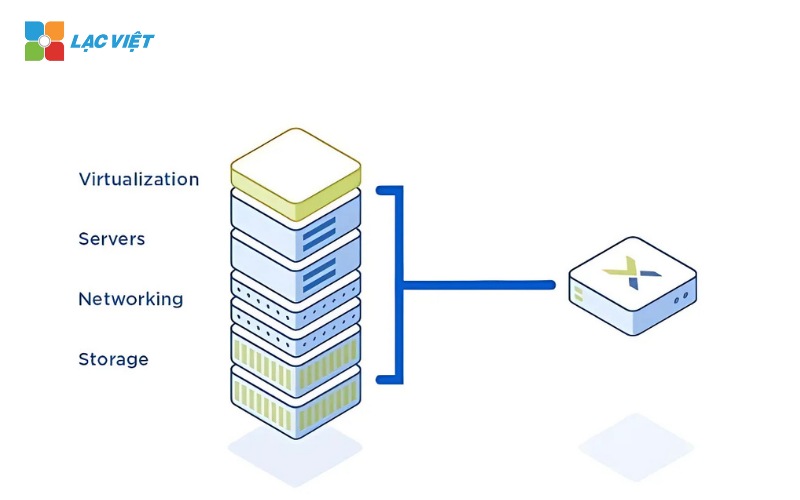
5.2 optimal investment cost and operation (CAPEX & OPEX)
Deployment Hyper Converged Infrastructure not only minimize the cost of the initial investment but also optimized operating costs, long-term, bringing economic value markedly for business.
- Get rid of complex systems: Instead of spending big budget to shopping and maintenance of storage devices, SAN or NAS traditional HCI using Software-Defined Storage (SDS) to manage the entire storage on the software platform.
- Long-term savings: A research by IDC for see businesses using HCI reduced to 40% of operating costs within 5 years thanks to the optimization of energy consumption, reduce the number of devices need to manage and minimize requires recruitment of personnel operating system.
5.3 enhanced performance and scalability
HCI not only meet current needs but also to create conditions for enterprises to easily scale when developing.
- Outstanding performance: Thanks to use of modern technologies such as NVMe storage and networking SDN, HCI brings performance increased on average by 50% compared with the system infrastructure, traditional. This is especially important for businesses that require handling big data (Big Data) or the real-time application.
- Scalability is not limited to: HCI allows businesses to add additional resources in a flexible way through adding the new node to the system without the need to re-design the entire infrastructure. This is a big advantage when business business expansion or application of new technology without interrupting the current activity.
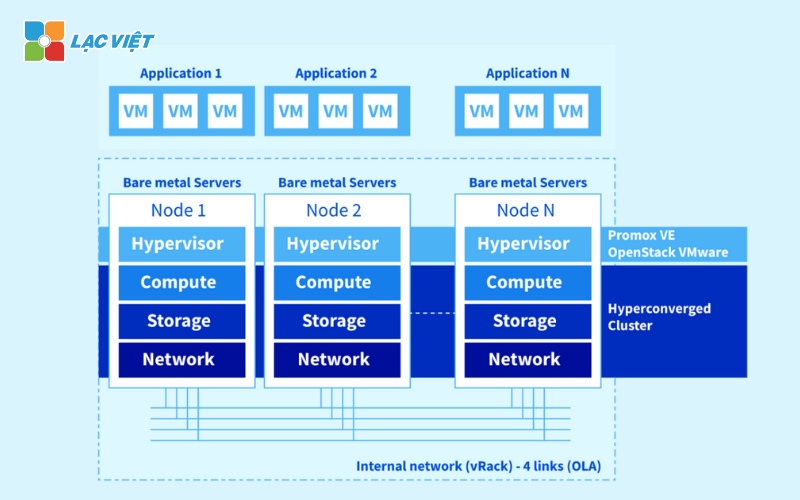
5.4 Ensure the security and high reliability
In the context of the threat of cyber security is increasing, Hyper Converged Infrastructure brings the superior security and high reliability for business.
- Built-in features backup and disaster recovery: HCI comes with tools such as snapshot backup or disaster recovery automatically, helping to ensure data is always protected. Even when an error occurs, the hardware, the data can still be restored from the copy on the node other, reducing the risk of interruption of operation.
- High availability (high availability): Mechanism dispersion data on many node ensures the system continues to operate even when one or more components in trouble. This helps reduce downtime down under 1%enhance reliability of the system and minimize the negative impact to business operations.
6. Process system deployment HCI for business in Vietnam
Deploy infrastructure hyper-converged requires the coordination and professional to ensure system operation stability, achieve optimum performance, meet the needs of long-term development of the business.
In Vietnam, the process of HCI is done basically through specific step by step, from the stage of initial survey to support operation after deployment.
Step 1: Determine the requirements of customers
Our team of experts from Vietnam to conduct direct exchange with the business to understand current needs. This includes identifying the specific goals such as performance, security, scalability and budget for systems Hyper Converged Infrastructure.
In addition, the team surveyed the current state of IT infrastructure is there, noted the problems such as poor performance, frequent errors, or the resource is not optimized.

Step 2: proposed solution
Based on the survey data, Lac will propose the solution infrastructure HCI optimal. Each solution will be adjusted based on specific requirements such as large data storage, support for multiple applications or the ability to integrate with the platform used.
Step 3: quotation and negotiate
Lac Viet send to the customer a quote Hyper Converged Infrastructure details, transparency, including:
- Cost of hardware (servers, storage drives SSD/NVMe, network equipment).
- Cost of software (license hypervisor, management software).
- Cost of service deployment and warranty.
Business team work with business to ensure the terms are clear, protective benefits for both sides.
Step 4: Develop solutions
Installation and configuration
After the contract is signed, the technical team will carry out:
- Installation hardware: Ensure equipment is properly installed standard techniques.
- Software configuration: Integrated components such as virtualization, software-defined storage and networking.
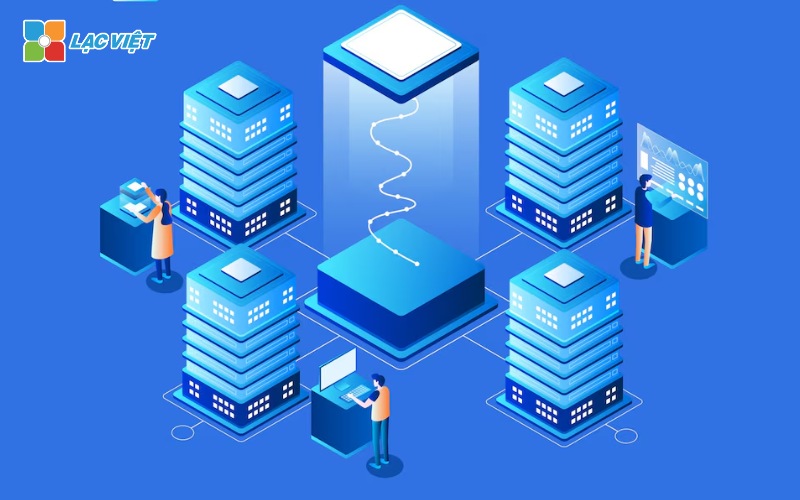
Check operation
Before the handover, the system will be thoroughly checked to make sure every function works properly with the request.
Training
Lac Viet provide training sessions details, help the IT team of business capture management, system optimization.
Step 5: technical Support
Support team ready to answer any questions or handle the technical issues. Business will be to ensure that the system always updates the latest software version while maintaining high stability.
7. Vietnam – unit construction systems, infrastructure, hyper converged HCI with 30+ years experience
Lac Viet is one of the pioneers in Vietnam in providing solutions, IT infrastructure, comprehensive construction services and system deployment Hyper Converged Infrastructure (HCI). With over 30 years of experience, Vietnam not only meets but also exceeds the expectations of our customers thanks to the dedicated professionals in every project.
HCI design and implementation
Design and implement network infrastructure HCI in accordance with specific requirements, including selection of hardware components – HCI software, network configuration, hard drive, processor, virtualization.
Technical support and maintenance
Lac Viet provide technical support, maintenance, system infrastructure, HCI, including support repair, upgrade hardware, software, maintenance, update and troubleshooting.
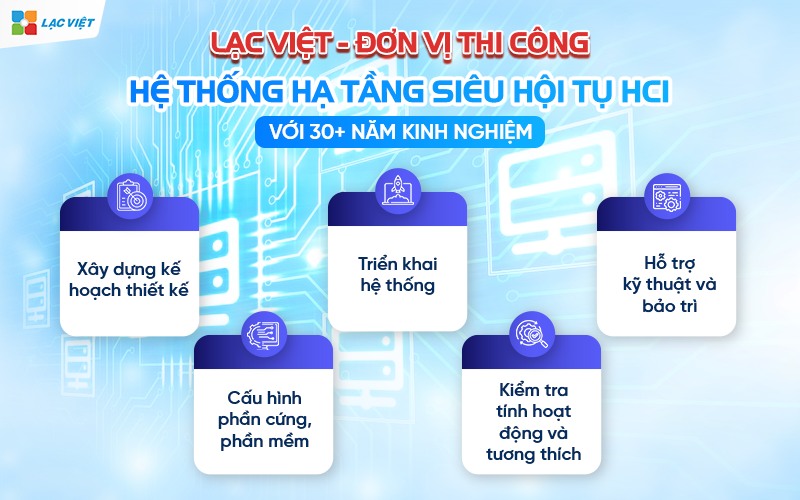
With outstanding benefits that Hyper Converged Infrastructure bring, from the optimal operating costs, improve system performance, to scalable, flexible and ensures high security solutions are increasingly becoming the preferred choice for the modern enterprise. The deployment of a system HCI not only help simplify management, but also create a solid foundation for the sustainable development of the business in the future. If you are looking for a solutions infrastructure hyper-converged match and team of professionals have experience in the construction system, Vietnam with more than 30 years of experience ready companion.
CONTACT INFORMATION:
- Lac Viet Computing Corporation
- Hotline: 0901 555 063 | (+84.28) 3842 3333
- Email: info@lacviet.vn – Website: https://lacviet.vn
- Headquarters: 23 Nguyen Thi Huynh, P. 8, Q. Phu Nhuan, Ho Chi Minh city

